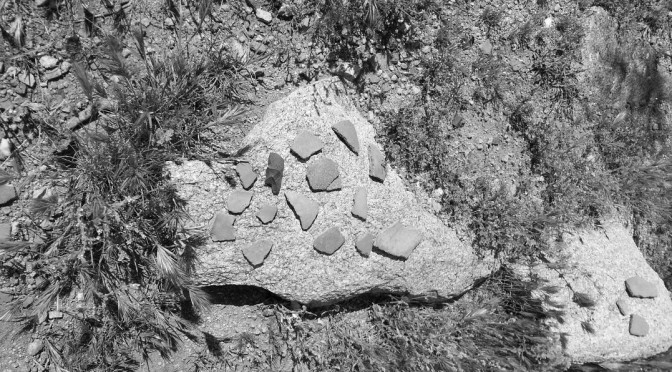“Below the summit, most of the buildings have crumbled to mere rock piles, but many walls remain intact enough to show outlines of where rooms used to exist. Emil and Bruce Valehrach, archaeologists who excavated the ruin in the late 1960s, found that the summit and surrounding slopes of St. Clair Mountain had ninety-two rooms when they were occupied sometime between A.D. 1100 and 1300. Among many other things, the 1960s excavation also turned up bracelets made from seashells that had been buried along with many of the pueblo’s inhabitants. The arm of one skeleton bore thirteen bracelets, all made from large round shells with their centers bored out almost to the edge so that only a thin rim was left. These bracelets inspired one of the excavators to name the ruin Brazaletes Pueblo, a Spanish reference to the jewelry, and today many people call the village atop St. Clair Mountain by that name.”
– Hiking Ruins Seldom Seen, Dave Wilson
This site had one of the most abundant collections of pottery sherds I’ve seen at a ruin. In addition, we found a very clear grinding stone, which is pictured below.







